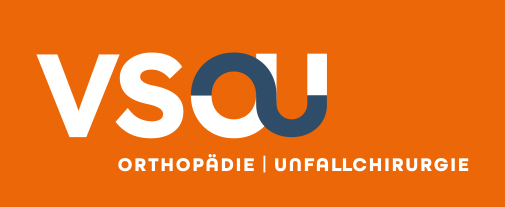Übersichtsarbeiten - OUP 06/2013
3. Brennan GP, Fritz JM, Hunter SJ et al. Identifying subgroups of patients with acute/ subacute nonspecific low back pain. Spine 2006; 31: 623–631
4. Chmielewski TL, Hurd WJ, Snyder-Mackler L. Elucidation of a potentially destabilizing control strategy in acl deficient non-copers. J Electromyogr Kinesiol 2005; 15: 83–92
5. Delince P, Gafil D. Anterior cruciate ligament tears: conservative or surgical treatment? A critical review of the literature. Knee Surg Sports Traumatol Arthrosc 2012; 20: 48–61
6. Eitzen I, Moksnes H, Snyder-Mackler L et al. Functional tests should be accentuated more in the decisionfor ACL reconstruction. Knee Surg Sports Traumatol Arthrosc 2010a; 18: 1517–1525
7. Eitzen I, Eitzen TJ, Holm I, Snyder-Mackler L, Risberg MA. Anterior cruciate ligament-deficient potential copers and noncopers reveal different isokinetic quadriceps strength profiles in the early stage after injury. Am J Sports Med 2010b; 38: 586–593
8. Fitzgerald GK, Axe MJ, Snyder-Mackler L. Proposed practice guidelines for nonoperative anterior cruciate ligament rehabilitation of physically active individuals. J Orthop Sports Phys Ther 2000; 30: 194–203
9. Fritz JM, Cleland JA, Childs JD. Subgrouping patients with low back pain: evolution of a classification approach to physical therapy. J Orthop Sports Phys Ther 2007; 37: 290–302
10. Frobell RB, Roos EM, Roos HP. A Randomized Trial of Treatment for Acute Anterior Cruciate Ligament Tears. New Engl J Med 2010; 22: 331–342
11. Herrington L, Fowler E. A systematic literature review to investigate if we identify those patients who can cope with anterior cruciate ligament deficiency. Knee 2006; 13: 260–265
12. Houck JR, Wilding GE, Gupta R et al. Analysis of EMG patterns of control subjects with acl deficiency during an unanticipated walking cut task. Gait Posture 2007; 25: 628–638
13. Hurd WJ, Snyder-Mackler L. Knee instability after acute acl rupture affects movement patterns during the mid-stance phase of gait. J Orthop Res 2007; 25: 1369–1377
14. Hurd WJ, Axe MJ, Snyder-Mackler L et al. Influence of age, gender, and injury mechanism on the development of dynamic knee stability after acute acl rupture. J Orthop Sports Phys Ther 2008; 38; 36–41
15. Kaplan Y. Identifying individuals with an anterior cruciate ligament-deficient knee as copers ans noncopers: a narrative literature review. J Orthop Sports Phys Ther 2011; 41: 758–766
16. Kessler MA, Behrend H, Henz S. Function, osteoarthritis and activity after acl rupture: 11 years follow-up results of conservative versus reconstructive treatment. Knee Surg Sports Traumatol Arthrosc 2008; 16: 442–448
17. Linko E, Harilainen A, Malmivaara A et al. Surgical versus conservative interventions for anterior cruciate ligament ruptures in adults. Cochrane Database Syst Rev 2005: CD001356
18. Moksnes H, Snyder-Mackler L, Risberg MA. Individuals with an anterior cruciate ligament-deficient knee classified as noncopers may be candidates for nonsurgical rehabilitation. J Orthop Sports Phys Ther 2008; 38: 586–595
19. Moksnes H, Risberg MA. Performance-based functional evaluation of nonopeative and operative treatment after anterior cruciate ligament injury. Scand J Med Sci Sports 2009; 19: 345–355
20. Myklebust G, Engebretsen L, Hoff Braekken I et al. Prevention of anterior cruciate ligament injuries in female team handball players: a prospective intervention study over three seasons. Clin J Sport Med 2003; 13: 71–78
21. Nitzsche NH, Schulz H. Zur Trainingsmethodik nach Rekonstruktion des vorderen Kreuzbandes. Vortrag Lehrstuhl für Sportmedizin; Chemnitz: 2007
22. Noyes FR, DeMaio M, Mangine RE. Evaluation-based protocols: a new approach to rehabilitation. Orthopedics. 1991;14: 1383–1385
23. Rudolph KS, Snyder-Mackler L. Effect of dynamic stability on a step task in acl deficient individuals. J Electromyogr Kinesiol 2004; 14: 565–575
Fussnoten
Nachdruck mir freundlicher Genehmigung des Georg Thieme Verlages aus der Zeitschrift physiopraxis 5/2012, S. 40–43
Fortbildungen für orthopädische Medizin und manuelle Therapie, Stuttgart
